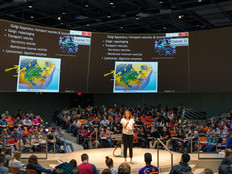Adam Antor: In general, smaller institutions experience a near-immediate, complete ROI on esports in the form of additional tuition dollars from new students. For larger institutions, the value of esports lies in retention and adding value to the student experience rather than on a short-term increase in enrollment. At a previous institution, I led a program that brought in hundreds of thousands of dollars in additional tuition revenue every year, even after deducting out the expenses of running a competitive esports program.
Doug Konopelko: Esports can bring in more students, which means more tuition for the university. It attracts students whose affiliation to the school will be through esports and gaming. There’s also the viewer base — students who are not going to get involved with the program but who choose the school in part because they really enjoy that their school supports and celebrates gaming and esports.
RELATED: 3 successful esports recruitment strategies and why they worked for these colleges.
EDTECH: How can the right technologies help support this?
Karen Ruggles: The system has to have certain reliability, processing and GPU abilities. The peripherals, such as a mouse and keyboard that are used in a general computing lab, will not suffice.
Mark Deppe: You’ve got to have a pretty competent esports arena, with the right tools so that students can play competitively. One of our corporate sponsors is Logitech. They provide all our peripherals, so our athletes get to choose between the finest mice, keyboards and headsets. Those are important, as they’re what connects athletes to the computers, and people are really picky about those. They really want high-quality instruments.
DISCOVER: A new look for esports competition spaces.
Adam Antor: The right technologies can aid institutions in their recruitment efforts as well as provide esports directors and coaches the resources to be more efficient in their workdays. By investing properly up front, an institution can create a space that is attractive to prospective students, offer PCs that do not need to be replaced as quickly and create a space that supports consistent growth in their esports program.
Doug Konopelko: It’s primarily a specialized PC, a specialized set of peripherals and a specialized monitor. All of that is the backbone. The programs you’re using are very graphics intensive, so your standard off-the-shelf equipment just won’t cut it. Specialized peripherals are important because of the faster reaction time. You want to be able to individualize and personalize the settings. That’s really important to the players.














